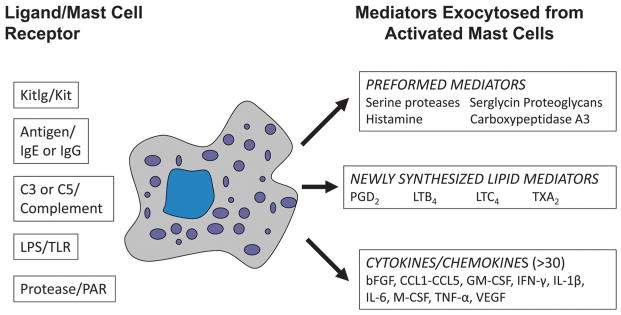FIGURE 1.

Mediators released from activated MCs. MCs express receptors that recognize different growth factors, immunoglobulins, bacterial components, and complement-derived factors. On a weight basis, ~50% of the protein content of a mature MC in the GI tract consists of varied proteases stored in the cell’s secretory granules ionically bound to serglycin proteoglycans. When MCs are activated (e.g., by their IgG receptors FcγRI and FcγRIII), they exocytose the preformed mediators from their secretory granules. Minutes to hours later, the activated MCs generate and release varied lipid mediators and cytokine/chemokine mediators, respectively. MCs are heterogeneous immune cells in tissues, and the combinations of mediators they produce are dependent on the cell’s phenotype and the activating signaling pathway.
